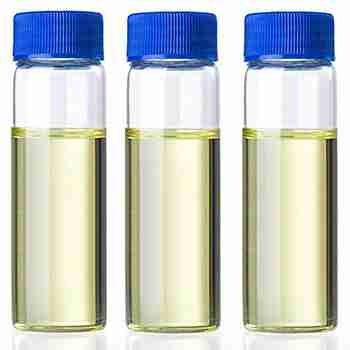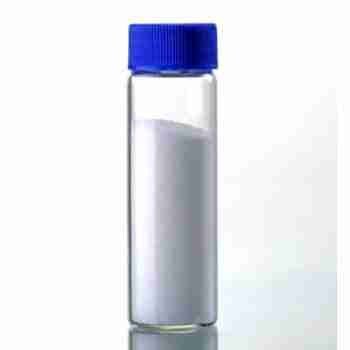PEG-12 dimethicone CAS 68937-54-2
CAS: 68937-54-2
Appearance: Light yellow translucent liquid
Packaging: 50kg/drum.200kg/drum.
Sample: available
related documents:
COA of PEG-12 Dimethicone
TDS of PEG-12 Dimethicone
Request for product documents
发送询盘
Description
PEG-12 dimethicone
PEG-12 dimethicone quick details:
English name: PEG-12 dimethicone
CAS: 68937-54-2
PEG-12 dimethicone Standard:
Item
Specification
Results
Appearance 25??
Light yellow translucent liquid
Light yellow translucent liquid
Viscosity (25?棬CP)
200-1000
346
Cloud point (1% water solution, ??)
??90
97
Conclusion
?Accords with the enterprise standard?.
Ps: When the temperature is below 20 ??, it will become turbid to a white soft wax-like body, which can turn back to liquid after heating without affecting the use.
PEG-12 dimethicone Performance characteristics
This product is a kind of organosilicon nonionic surfactant with unique performance which is made by grafting and copolymerizing polyether and polydimethylsiloxane. Compared with traditional hydrocarbon surfactants, this organosilicon surfactant Has the following characteristics:
1. Low surface tension.
2. Good lubricity and wear resistance.
3. Good antistatic and thermal stability.
In addition, compared with polydimethylsiloxane, this material can be dispersed in water, is also miscible with polar organic solvents such as alcohol, DMF, ether, ester, etc., and is partially or completely compatible with non-polar solvents such as toluene and alkanes.
PEG-12 dimethicone Application:
1. Leveling agent for synthetic leather coating;
2. Make the synthetic coating have anti-blocking, lubricity, wear resistance and improve its scratch resistance;
3. Improve the defoaming and anti-foaming properties of defoamers;
4. Used in the manufacture and processing of yarns and fibers, providing lubricity, thermal stability and antistatic properties.
PEG-12 dimethicone Dosage
1. Used in synthetic leather system, directly added to the slurry, the recommended addition amount is 0.2-0.5%;
2. When making finishing agent, add water directly and stir well after dispersion. If stratification occurs, high shear equipment such as homogenizer can be used.
PEG-12 dimethicone Precautions
There may be pressure in the package. It is forbidden to open it suddenly, and the lid should be opened after slowly releasing the pressure. It is forbidden to face workers, electrical equipment, and fire sources. It cannot be mixed with strong acids and strong alkaline substances. It is stable under the system of PH=5, otherwise it is easy to produce free hydrogen and cause explosion. It is advisable to use adequate ventilation and exhaust equipment, avoid eye contact, do not take it internally, and implement good industrial hygiene measures. Please wash after operation, especially before eating, drinking and smoking. For a long time at a high temperature above 160 degrees Celsius or mixed with acid and alkali substances, the viscosity will increase or even cross-linking.
PEG-12 dimethicone Packaging and storage
1. Packaging: This product is packed in 50kg plastic drum and 200kg galvanized iron drum.
2. Storage: Store in a dry, cool place, avoid contact with strong acids and alkalis.
3. Transportation: This product is transported as non-dangerous goods.
| 5 |
|
0 |
| 4 |
|
0 |
| 3 |
|
0 |
| 2 |
|
0 |
| 1 |
|
0 |
- 2
- 2-diallylpent-4-en-1-amine
- 4
- 95-16-9
- Ammonium sulfamate
- Benzothiazole
- cas:67889-00-3ح2
- cas:83524-75-8 | pigment black 32
- cas:928836-00-4 | 2
- cas:932745-70-5 | 4
- Chemical Minerals
- Coconut diethanolamide
- Daily Chemicals
- discount
- for sale
- General pvc resin
- hexyl D-glucoside
- in stock
- Lauramidopropyl betaine
- LAURIC ACID MONOETHANOLAMIDE
- Petroleum Additives
- Plasticiser
- Ploymers
- price
- PVC
- quotation
- Raw Materal
- Remove term: Petroleum Additives Petroleum Additive
- SODIUM ETHYL 2-SULFOLAURATE
Related Products
Chemical Name: o-Xylene
Synonyms: 1,2-Dimethylbenzene; ortho-xylene
CAS No.: 95-47-6
Molecular Formula: C8H10
Molecular Weight: 106.17
Coconut Oil Monoethanolamide is a high-performance emulsifier derived from natural coconut oil. It is a key component in personal care and cosmetic formulations, providing excellent emulsifying properties and improving product texture. With its natural origin and superior performance, it is the preferred choice for creating stable and high-quality products.
Common English name: 5-iodo-2,3-dihydropyridazin-3-one
CAS No.: 825633-94-1
Molecular formula: C4H3IN2O
Molecular weight: 221.98
Sample: Available
Decyl Glucoside is an eco-friendly, non-ionic surfactant derived from renewable resources. Renowned for its mildness and biodegradability, it is ideal for creating gentle, high-performing cleaning agents in personal care and household products. Its sustainable and effective nature makes it a preferred choice for green formulations.
Chemical Name: Ammonium Iron(II) Sulfate
Synonyms: Diammonium iron bis(sulphate); iron (ii) ammonium sulfate
CAS No.: 10045-89-3
Molecular Formula: FeH5NO4S
Molecular Weight: 170.95
Decyl Glucoside is an eco-friendly, non-ionic surfactant derived from renewable resources. Renowned for its mildness and biodegradability, it is ideal for creating gentle, high-performing cleaning agents in personal care and household products. Its sustainable and effective nature makes it a preferred choice for green formulations.
Chemical Name: Zinc citrate
Synonyms: Zinc citrate trihydrate
CAS No.: 546-46-3
Molecular Formula: C6H8O7Zn
Molecular Weight: 257.5
Appearance: White powder
Hexyl D-glucoside is a non-ionic, plant-based surfactant derived from renewable resources such as corn or potato starch. It is recognized for its excellent skin compatibility and mildness, making it a preferred choice for formulations in personal care products, especially those targeting sensitive skin. With its superior solubilizing and foaming capabilities, it enhances the sensory experience of the product without compromising its gentleness. Its eco-friendly profile and biodegradability also align with green chemistry principles, appealing to consumers seeking sustainable product options.
Decyl glucoside, scientifically known as ??-D-Glucopyranoside, is a non-ionic surfactant derived from renewable resources, such as glucose and fatty alcohols. It is a biodegradable and mild alternative to traditional surfactants, making it a preferred choice for eco-friendly and sensitive skin formulations.
This compound is characterized by its ability to form stable emulsions and foams, which are essential properties in a variety of applications, including personal care products and household cleaning agents. Decyl glucoside is valued for its low irritation potential and excellent skin compatibility, making it suitable for use in baby care and cosmetic products.
Chemically, decyl glucoside features a hydrophilic head and a hydrophobic tail, allowing it to effectively reduce surface tension and solubilize oils in water. Its mildness and biodegradability contribute to its use in formulations that require gentle cleansing without compromising the integrity of the skin’s natural barrier.
In summary, decyl glucoside is a versatile and sustainable surfactant that offers a balance of performance and safety. Its eco-friendly profile and compatibility with sensitive skin types make it an ideal ingredient for a wide range of personal care and cleaning products.
Lauryl Glucoside is an eco-conscious non-ionic surfactant, derived from sustainable lauric acid and glucose. It offers superior mildness and biodegradability, making it an ideal choice for formulating gentle and effective cleaning agents in personal care and household products. Its bio-based nature aligns with the growing demand for green chemistry solutions.
Sodium Ethyl 2-Sulfolaurate is a surfactant with a unique combination of properties. It is an anionic compound, derived from the sulfonation of ethyl laurate, which is then neutralized with sodium hydroxide. This results in a product that is highly effective in lowering the surface tension of water, making it an excellent wetting agent and emulsifier. It is commonly used in personal care products, detergents, and industrial applications for its foaming and dispersing capabilities. As a mild and biodegradable ingredient, it is favored for its environmental and skin-friendly attributes, ensuring safety and performance in a variety of formulations.
Chemical Name: Arabic gum
CAS No.: 9000-01-5
Appearance: powder















Reviews
There are no reviews yet.